- Recent Articles
- Most Citedi
- Most Visitedi
- Future Articles
-
10-13-2000
A FEBRASGO e a Integração com o Conselho Federal de Medicina e o Ministério da Saúde
Revista Brasileira de Ginecologia e Obstetrícia. 2000;22(6):323-323
Views67

This is an Open Access article distributed under the terms of the Creative Commons Attribution License, which permits unrestricted use, distribution, and reproduction in any medium, provided the original work is properly cited. Abstract
A FEBRASGO e a Integração com o Conselho Federal de Medicina e o Ministério da Saúde
Revista Brasileira de Ginecologia e Obstetrícia. 2000;22(6):323-323
DOI 10.1590/S0100-72032000000600001
Views67A FEBRASGO e a Integração com o Conselho Federal de Medicina e o Ministério da Saúde […]See more

This is an Open Access article distributed under the terms of the Creative Commons Attribution License, which permits unrestricted use, distribution, and reproduction in any medium, provided the original work is properly cited. -
10-13-2000
Estudo do Tratamento Cirúrgico de 33 Pacientes Portadoras de Prolapso Vaginal Pós-histerectomia
Revista Brasileira de Ginecologia e Obstetrícia. 2000;22(4):245-245
Views71

This is an Open Access article distributed under the terms of the Creative Commons Attribution License, which permits unrestricted use, distribution, and reproduction in any medium, provided the original work is properly cited. Abstract
Estudo do Tratamento Cirúrgico de 33 Pacientes Portadoras de Prolapso Vaginal Pós-histerectomia
Revista Brasileira de Ginecologia e Obstetrícia. 2000;22(4):245-245
DOI 10.1590/S0100-72032000000400015
Views71Estudo do Tratamento Cirúrgico de 33 Pacientes Portadoras de Prolapso Vaginal Pós-histerectomia […]See more

This is an Open Access article distributed under the terms of the Creative Commons Attribution License, which permits unrestricted use, distribution, and reproduction in any medium, provided the original work is properly cited. -
10-13-2000
Comparação Entre Dois Modelos de Partogramas Aplicados à Assistência Clínica ao Parto de Primigestas
Revista Brasileira de Ginecologia e Obstetrícia. 2000;22(4):245-245
Views63PlumX Metrics
- Citations
- Policy Citations: 1
- Usage
- Full Text Views: 9556
- Abstract Views: 14
- Mentions
- References: 1


This is an Open Access article distributed under the terms of the Creative Commons Attribution License, which permits unrestricted use, distribution, and reproduction in any medium, provided the original work is properly cited. Abstract
Comparação Entre Dois Modelos de Partogramas Aplicados à Assistência Clínica ao Parto de Primigestas
Revista Brasileira de Ginecologia e Obstetrícia. 2000;22(4):245-245
DOI 10.1590/S0100-72032000000400014
Views63Comparação Entre Dois Modelos de Partogramas Aplicados à Assistência Clínica ao Parto de Primigestas […]See morePlumX Metrics
- Citations
- Policy Citations: 1
- Usage
- Full Text Views: 9556
- Abstract Views: 14
- Mentions
- References: 1


This is an Open Access article distributed under the terms of the Creative Commons Attribution License, which permits unrestricted use, distribution, and reproduction in any medium, provided the original work is properly cited. -
10-13-2000
Avaliação Epidemiológica dos Fatores de Risco Anteparto para Ocorrência de Cesariana no Hospital Universitário Pedro Ernesto no Período de Junho de 1993 a Novembro de 1994
Revista Brasileira de Ginecologia e Obstetrícia. 2000;22(4):244-244
Views64

This is an Open Access article distributed under the terms of the Creative Commons Attribution License, which permits unrestricted use, distribution, and reproduction in any medium, provided the original work is properly cited. Abstract
Avaliação Epidemiológica dos Fatores de Risco Anteparto para Ocorrência de Cesariana no Hospital Universitário Pedro Ernesto no Período de Junho de 1993 a Novembro de 1994
Revista Brasileira de Ginecologia e Obstetrícia. 2000;22(4):244-244
DOI 10.1590/S0100-72032000000400012
Views64Avaliação Epidemiológica dos Fatores de Risco Anteparto para Ocorrência de Cesariana no Hospital Universitário Pedro Ernesto no Período de Junho de 1993 a Novembro de 1994. […]See more

This is an Open Access article distributed under the terms of the Creative Commons Attribution License, which permits unrestricted use, distribution, and reproduction in any medium, provided the original work is properly cited. -
10-13-2000
Prognóstico da Mola Hidatiforme pela Citometria Digital
Revista Brasileira de Ginecologia e Obstetrícia. 2000;22(4):244-244
Abstract


This is an Open Access article distributed under the terms of the Creative Commons Attribution License, which permits unrestricted use, distribution, and reproduction in any medium, provided the original work is properly cited. -
10-13-2000
Relação da Gravidade da Endoteliose Capilar Glomerular com Formas Clínicas das Doenças Hipertensivas na Gravidez
Revista Brasileira de Ginecologia e Obstetrícia. 2000;22(4):243-243
Abstract
Relação da Gravidade da Endoteliose Capilar Glomerular com Formas Clínicas das Doenças Hipertensivas na Gravidez
Revista Brasileira de Ginecologia e Obstetrícia. 2000;22(4):243-243
DOI 10.1590/S0100-72032000000400010
Views60Relação da Gravidade da Endoteliose Capilar Glomerular com Formas Clínicas das Doenças Hipertensivas na Gravidez […]See more

This is an Open Access article distributed under the terms of the Creative Commons Attribution License, which permits unrestricted use, distribution, and reproduction in any medium, provided the original work is properly cited. -
10-13-2000
Avaliação da Densidade Mamográfica em Mulheres na Menopausa, sob Terapia de Reposição Hormonal
Revista Brasileira de Ginecologia e Obstetrícia. 2000;22(4):243-243
Abstract
Avaliação da Densidade Mamográfica em Mulheres na Menopausa, sob Terapia de Reposição Hormonal
Revista Brasileira de Ginecologia e Obstetrícia. 2000;22(4):243-243
DOI 10.1590/S0100-72032000000400011
Views59Avaliação da Densidade Mamográfica em Mulheres na Menopausa, sob Terapia de Reposição Hormonal […]See more

This is an Open Access article distributed under the terms of the Creative Commons Attribution License, which permits unrestricted use, distribution, and reproduction in any medium, provided the original work is properly cited. -
Case Report10-13-2000
Primary Hyperparathyroidism after Menopause
Revista Brasileira de Ginecologia e Obstetrícia. 2000;22(4):239-241
Abstract
Case ReportPrimary Hyperparathyroidism after Menopause
Revista Brasileira de Ginecologia e Obstetrícia. 2000;22(4):239-241
DOI 10.1590/S0100-72032000000400009
Views78See moreOsteoporosis is an important disease which can affect millions of patients all over the world, leading to complications, often even to death. Prevention and the early diagnosis may help in the success of treatment but there are diseases which can occur at the same time. Primary hyperparathyroidism is a diagnosis which must be remembered in women after the menopause.


This is an Open Access article distributed under the terms of the Creative Commons Attribution License, which permits unrestricted use, distribution, and reproduction in any medium, provided the original work is properly cited.
-
Original Article10-01-2016
Uterine Fibroid Symptom – Quality of Life questionnaire translation and validation into Brazilian Portuguese
- Rita Oliveira da Silva,
- Mariano Tamura Vieira Gomes,
- Rodrigo de Aquino Castro,
- Cláudio Emílio Bonduki,
- Manoel João Batista Castello Girão
Abstract
Original ArticleUterine Fibroid Symptom – Quality of Life questionnaire translation and validation into Brazilian Portuguese
Revista Brasileira de Ginecologia e Obstetrícia. 2016;38(10):518-523
- Rita Oliveira da Silva,
- Mariano Tamura Vieira Gomes,
- Rodrigo de Aquino Castro,
- Cláudio Emílio Bonduki,
- Manoel João Batista Castello Girão
Views240See moreAbstract
Purpose
To translate into Portuguese, culturally adapt and validate the Uterine Fibroid Symptom – Quality of Life (UFS-QoL) questionnaire for Brazilian women with uterine leiomyoma.
Methods
Initially, the UFS-QoL questionnaire was translated into Brazilian Portuguese in accordance with international standards, with subsequent cultural, structural, conceptual and semantic adaptations, so that patients were able to properly answer the questionnaire. Fifty patients with uterine leiomyoma and 19 patients without the disease, confirmed by abdominal pelvic examination and/or transvaginal ultrasound, were selected at the outpatient clinics of the Department of Gynecology of the Universidade Federal de São Paulo (Unifesp). The UFS-QoL questionnaire was administered to all women twice on the same day, with two different interviewers, with an interval of 15 minutes between interviews. After 15 days, the questionnaire was readministered by the first interviewer. Reliability (internal consistency and test-retest), construct and discriminative validity were tested to ratify the questionnaire.
Results
The reliability of the instrument was assessed by Cronbach’s α coefficient with an overall result of 0.97, indicating high reliability. The survey results showed a high correlation (p= 0.94; p 0.001).
Conclusion
The UFS-QoL questionnaire was successfully adapted to the Brazilian Portuguese language and Brazilian culture, showing reliability and validity.


This is an Open Access article distributed under the terms of the Creative Commons Attribution License, which permits unrestricted use, distribution, and reproduction in any medium, provided the original work is properly cited. -
Case Report03-01-2017
Limb Body Wall Complex Associated with Placenta Accreta: A Mere Coincidence or a Sign of an Etiopathogenic Link?
- Marcos Masaru Okido,
- Aderson Tadeu Berezowski,
- Sandra Regina Marques Carvalho,
- Geraldo Duarte,
- Ricardo de Carvalho Cavalli, [ … ],
- Alessandra Cristina Marcolin
Abstract
Case ReportLimb Body Wall Complex Associated with Placenta Accreta: A Mere Coincidence or a Sign of an Etiopathogenic Link?
Revista Brasileira de Ginecologia e Obstetrícia. 2017;39(3):142-146
- Marcos Masaru Okido,
- Aderson Tadeu Berezowski,
- Sandra Regina Marques Carvalho,
- Geraldo Duarte,
- Ricardo de Carvalho Cavalli,
- Alessandra Cristina Marcolin
Views242See moreAbstract
A case was reported of a fetus with the anomaly of limb body wall complex associated with placenta accreta. To date, only one account of this condition has been published in the world literature. Due to the low frequency of both complications, the hypothesis has been raised that this association may have happened not by mere coincidence, but rather by a possible common etiopathogenic mechanism. For the first time, a study proposes the existence of a possible etiopathogenic connection between the anomaly of limb body wall complex and hypoxic disorders caused by inadequate placentation in previous uterine scarring.


This is an Open Access article distributed under the terms of the Creative Commons Attribution License, which permits unrestricted use, distribution, and reproduction in any medium, provided the original work is properly cited. 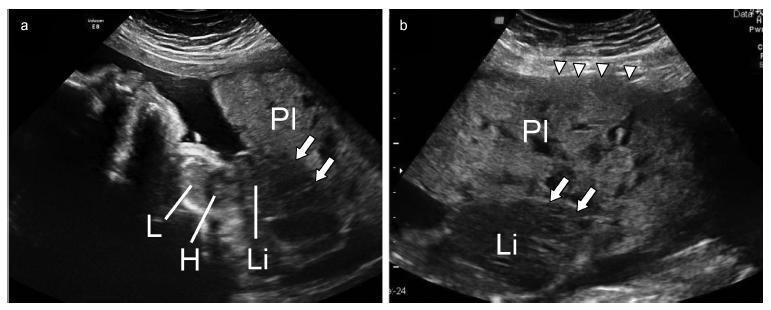
-
Original Article01-01-2018
Body Mass Index Changes during Pregnancy and Perinatal Outcomes – A Cross-Sectional Study
- Sirlei Siani Morais,
- Simony Lira Nascimento,
- Ana Carolina Godoy-Miranda,
- Karina Tamy Kasawara,
- Fernanda Garanhani Surita
Abstract
Original ArticleBody Mass Index Changes during Pregnancy and Perinatal Outcomes – A Cross-Sectional Study
Revista Brasileira de Ginecologia e Obstetrícia. 2018;40(1):11-19
- Sirlei Siani Morais,
- Simony Lira Nascimento,
- Ana Carolina Godoy-Miranda,
- Karina Tamy Kasawara,
- Fernanda Garanhani Surita
Views219See moreAbstract
Objective
To evaluate the relation between changes the body mass index (BMI) percentile, reflected in the Atalah curve, and perinatal outcomes.
Methods
A cross-sectional study with 1,279 women was performed. Data regarding gestational weight, sociodemographic characteristics and perinatal outcomes were collected through medical charts, prenatal card and interviews in the postpartum period. Women could be classified according to the Atalah curve in the following categories: low weight, adequateweight, overweight, and obese. The BMIwas calculated at the first and at the last prenatal care visits, and these values were compared.
Results
An increase in the BMI category according to the Atalah classification occurred in 19.9% of pregnant women, and an increase of 3.4, 5.8 and 6.4 points of BMI were found for women respectively classified in the adequate weight, overweight and obese categories at the first prenatal visit. Women with high school education presented a lower chance of increasing their BMI (odds ratio [OR] 0:47 [0.24- 0.95]). Women who evolved with an increase in the the Atalah classification were associated with cesarean section (OR 1.97-2.28), fetalmacrosomia (OR 4.13-12.54) and large for gestational age newborn (OR 2.88-9.83).
Conclusion
Pregnant women who gained enough weight to move up in their BMI classification according to the Atalah curve had a higher chance of cesarean section and macrosomia. Women classified as obese, according to the Atalah curve, at the first prenatal visit had a high chance of cesarean section and delivering a large for gestational age newborn.


This is an Open Access article distributed under the terms of the Creative Commons Attribution License, which permits unrestricted use, distribution, and reproduction in any medium, provided the original work is properly cited. -
Original Article03-01-2018
Improving Perinatology Residents’ Skills in Breaking Bad News: A Randomized Intervention Study
- Maria Silvia Vellutini Setubal,
- Maria Ângela Reis Goes Monteiro Antonio,
- Eliana Martorano Amaral,
- John Boulet
Abstract
Original ArticleImproving Perinatology Residents’ Skills in Breaking Bad News: A Randomized Intervention Study
Revista Brasileira de Ginecologia e Obstetrícia. 2018;40(3):137-146
- Maria Silvia Vellutini Setubal,
- Maria Ângela Reis Goes Monteiro Antonio,
- Eliana Martorano Amaral,
- John Boulet
Views233Abstract
Objective
Breaking bad news (BBN) is particularly difficult in perinatology. Previous research has shown that BBN skills can be learned and improved when taught and practiced. This project evaluated whether a structured training session would enhance perinatology residents’ skills in BBN.
Methods
This was a randomized controlled intervention study with year 1 to 4 Perinatology residents from a medical school in Brazil, during the 2014/15 school year. A total of 61 out of 100 (61%) eligible residents volunteered to a structured training program involving communicating a perinatal loss to a simulated patient (SP) portraying the mother followed by the SP’s immediatefeedback,bothvideo recorded. Later, residents were randomly assigned to BBN training based on a setting, perception, invitation, knowledge, emotion and summary (SPIKES) strategy with video reviews (intervention) or no training (control group). All residents returned for a second simulation with the same SP blinded to the intervention and portraying a similar case. Residents’ performances were then evaluated by the SP with a checklist. The statistical analysis included a repeated measures analysis of covariance (RM-ANCOVA). Complementarily, the residents provided their perceptions about the simulation with feedback activities.
Results
Fifty-eight residents completed the program. The simulations lasted on average 12 minutes, feedback 5 minutes and SPIKES training between 1h and 2h30m. There was no significant difference in the residents’ performances according to the SPs’ evaluations (p = 0.55). The participants rated the simulation with feedback exercises highly. These educational activities might have offset SPIKES training impact. Conclusion The SPIKES training did not significantly impact the residents’ performance. The residents endorsed the simulation with feedback as a useful training modality. Further research is needed to determine which modality is more effective.
Key-words educationHealth communicationinternship and residencymedicalpatient simulationperinatologySee more

This is an Open Access article distributed under the terms of the Creative Commons Attribution License, which permits unrestricted use, distribution, and reproduction in any medium, provided the original work is properly cited. -
Case Report09-01-2018
Diagnosis of Atelosteogenesis Type I suggested by Fetal Ultrasonography and Atypical Paternal Phenotype with Mosaicism
- Joanna Goes Castro Meira,
- Manoel Alfredo Curvelo Sarno,
- Ágatha Cristhina Oliveira Faria,
- Guilherme Lopes Yamamoto,
- Débora Romeo Bertola, [ … ],
- Angelina Xavier Acosta
Abstract
Case ReportDiagnosis of Atelosteogenesis Type I suggested by Fetal Ultrasonography and Atypical Paternal Phenotype with Mosaicism
Revista Brasileira de Ginecologia e Obstetrícia. 2018;40(9):570-575
- Joanna Goes Castro Meira,
- Manoel Alfredo Curvelo Sarno,
- Ágatha Cristhina Oliveira Faria,
- Guilherme Lopes Yamamoto,
- Débora Romeo Bertola,
- Gabriela Gayer Scheibler,
- Dione Fernandes Tavares,
- Angelina Xavier Acosta
Views245Abstract
Atelosteogenesis type I (AOI) is an autosomal dominant skeletal dysplasia caused by mutations in the filamin B (FLNB) gene with classic and well-recognizable clinical findings. However, parents affected with a mild phenotype, probably with somatic mosaicism, can generate offspring with a much more severe phenotype of AOI. In the present report, we describe a female newborn with classic AOI leading to early neonatal death, whose diagnostic was based on prenatal radiological findings and on the physical examination of the father. Since her father had limb deformities and corporal asymmetry, suggesting somatic mosaicism, his biological samples were analyzed through a gene panel for skeletal dysplasias. A missense mutation not previously described in the literature was detected in the FLNB gene, affecting ~ 20% of the evaluated cells and, therefore, confirming the diagnosis ofmosaic AOI in the father. The molecular analysis of the father was crucial to suggest the diagnosis of AOI in the newborn, since she died early and there were no biological samples available.
Key-words atelosteogenesisexome-target sequencingFetal ultrasonographyFLNBskeletal dysplasiasomatic mosaicismSee more

This is an Open Access article distributed under the terms of the Creative Commons Attribution License, which permits unrestricted use, distribution, and reproduction in any medium, provided the original work is properly cited. 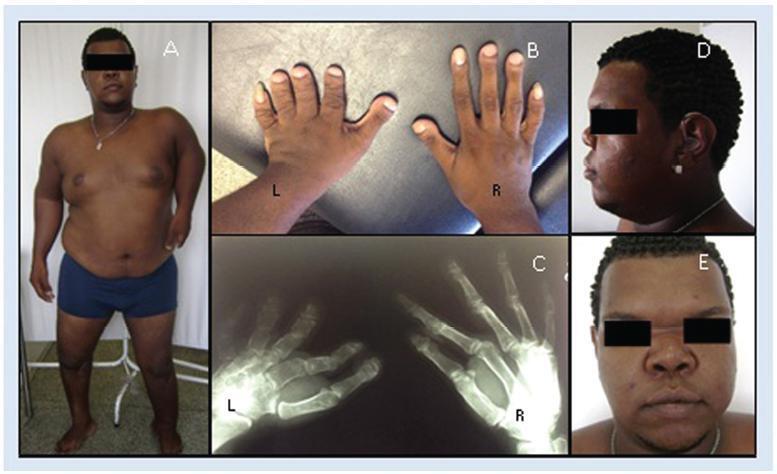
-
Case Report01-24-2021
Antenatal Diagnosis of Parapagus Conjoined Twins: 3D Virtual and 3D Physical Models
- Pedro Castro
 ,
, - Heron Werner
 ,
, - Ana Paula Matos
 ,
, - Gerson Ribeiro
 ,
, - Jorge Lopes
 , [ … ],
, [ … ], - Edward Araujo Júnior

Abstract
Case ReportAntenatal Diagnosis of Parapagus Conjoined Twins: 3D Virtual and 3D Physical Models
Revista Brasileira de Ginecologia e Obstetrícia. 2021;43(12):985-987
Views233See moreAbstract
Conjoined twins (CTs) are a rare complication from monochorionic and monoamniotic twin pregnancies. We describe the use of 3D technologies, including 3D virtual and 3D physical models on prenatal evaluation of one parapagus CT. A 16-year-old G1P0 woman was referred for fetal magnetic resonance imaging (MRI) anatomical evaluation of a CT at 28 weeks of gestation. 3D images of the fetal surface were generated by the software during the examination for spatial comprehension of the relationship between the fetal parts. The pair of CTs died at the 32nd week of gestation, a few hours after cesarean section. 3D technologies are an important tool for parental counseling and preparation of the multidisciplinary care team for delivery and neonatal assistance and possible surgical planning for postnatal separation in CTs cases.


This is an Open Access article distributed under the terms of the Creative Commons Attribution License, which permits unrestricted use, distribution, and reproduction in any medium, provided the original work is properly cited. 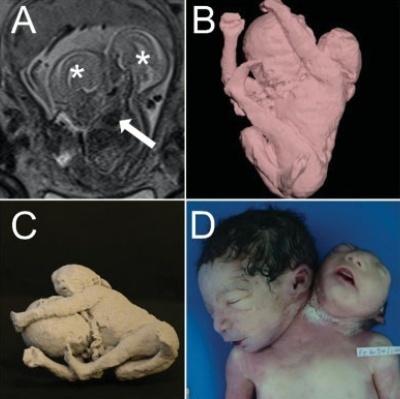
- Pedro Castro
-
Original Article05-24-2021
Disease Progression and Obstetric Outcomes of Women with Multiple Sclerosis at a Reference Center in Northeastern Brazil
- Gabrielle Maria Carvalho de Barros
 ,
, - Bianca Etelvina Santos de Oliveira
 ,
, - Gabriela Januário Oliveira
 ,
, - Rômulo Kunrath Pinto Silva
 ,
, - Thiago Nóbrega Cardoso
 , [ … ],
, [ … ], - Sabina Bastos Maia

Abstract
Original ArticleDisease Progression and Obstetric Outcomes of Women with Multiple Sclerosis at a Reference Center in Northeastern Brazil
Revista Brasileira de Ginecologia e Obstetrícia. 2021;43(3):165-171
- Gabrielle Maria Carvalho de Barros
 ,
, - Bianca Etelvina Santos de Oliveira
 ,
, - Gabriela Januário Oliveira
 ,
, - Rômulo Kunrath Pinto Silva
 ,
, - Thiago Nóbrega Cardoso
 ,
, - Sabina Bastos Maia

Views250See moreAbstract
Objective
To describe the obstetric outcomes of patients withmultiple sclerosis (MS) and the impact of pregnancy and the postpartum period on the progression of the disease.
Methods
A case series study performed between December 2019 and February 2020, reporting pregnancies occurred between 1996 and 2019. The subjects included were women with MS undergoing follow-up at an MS referral center in Northeastern Brazil, and who had at least one pregnancy after the onset of MS symptoms, or who had their first relapse in the first year after delivery.
Results
In total, 26 women and 38 pregnancies were analyzed – 32 of them resulted in delivery, and the remaining 6, in miscarriages. There was a significant increase in the prevalence of relapse during the postpartum period when compared with the gestational period. In 16 (42.1%) of the pregnancies, there was exposure to diseasemodifying therapies (DMTs) – 14 (36.8%), to interferon β, and 2 (5.3%), to fingolimod. Higher rates of abortion, prematurity and low birth weight were reported in the group was exposed to DMT when compared with the one who was not.
Conclusion
In the sample of the present study, there was a significant increase in the rate of MS relapse during the postpartum period when compared with the gestational period. Additionally, it seems that exposure to DMTs during pregnancy may affect the obstetric outcomes of the patients.


This is an Open Access article distributed under the terms of the Creative Commons Attribution License, which permits unrestricted use, distribution, and reproduction in any medium, provided the original work is properly cited. 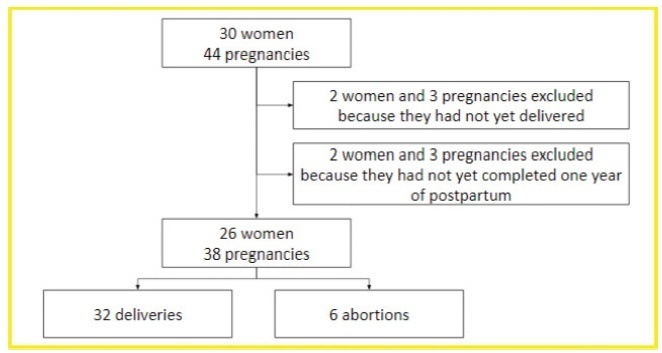
- Gabrielle Maria Carvalho de Barros
-
FEBRASGO POSITION STATEMENT01-23-2022
Screening, diagnosis and management of hypothyroidism in pregnancy: Number 10 – October 2022
- Sara Toassa Gomes Solha
 ,
, - Rosiane Mattar
 ,
, - Patrícia de Fátima dos Santos Teixeira
 ,
, - Maria Izabel Chiamolera
 ,
, - Carlos Alberto Maganha
 , [ … ],
, [ … ], - Renato Teixeira Souza

Abstract
FEBRASGO POSITION STATEMENTScreening, diagnosis and management of hypothyroidism in pregnancy: Number 10 – October 2022
Revista Brasileira de Ginecologia e Obstetrícia. 2022;44(10):999-1009


This is an Open Access article distributed under the terms of the Creative Commons Attribution License, which permits unrestricted use, distribution, and reproduction in any medium, provided the original work is properly cited. - Sara Toassa Gomes Solha
-
Review Article06-01-2018
Breastfeeding and the Benefits of Lactation for Women’s Health
Revista Brasileira de Ginecologia e Obstetrícia. 2018;40(6):354-359
Abstract
Review ArticleBreastfeeding and the Benefits of Lactation for Women’s Health
Revista Brasileira de Ginecologia e Obstetrícia. 2018;40(6):354-359
Views570See moreAbstract
The offer of the maternal breast to the baby is an unquestionable right of mothers and their children, and all efforts should bemade to promote, follow and maintain exclusive breastfeeding for up to 6months and supplement it until the child completes 2 years of age. Many publications are available in the literature about the qualities of breast milk, its benefits and health repercussions, stimulating the practice of breastfeeding and supporting campaigns for its implementation. However, although it is widely known that breastfeeding is an important step in the reproductive process of women and its practice offers benefits to both mother and child, most of the available information highlights the benefits of breast milk for children, while mention of the effects of breastfeeding on the health of the mother is usually neglected. Thus, the objective of the present study is to highlight the multiple benefits of breastfeeding for the physical and emotional health of the nursing mother. The authors consulted articles published in the databases PubMed, Virtual Health Library andWeb of Science using the keywords breastfeeding, breast milk, lactation and maternal health.


This is an Open Access article distributed under the terms of the Creative Commons Attribution License, which permits unrestricted use, distribution, and reproduction in any medium, provided the original work is properly cited. -
Review Article09-01-2017
Preeclampsia
Revista Brasileira de Ginecologia e Obstetrícia. 2017;39(9):496-512
Abstract
Review ArticlePreeclampsia
Revista Brasileira de Ginecologia e Obstetrícia. 2017;39(9):496-512
Views646Abstract
The authors review hypertensive disease during pregnancy with an academic and practical view, and using the best evidence available. This disease, which is the most important clinical disease in Brazilian pregnant women, may have its incidence reduced with prevention through the use of calcium and aspirin in pregnant women at risk. Previously, it was a disease that presented with hypertension with proteinuria, but it has now been classified with new clinical parameters besides proteinuria. Morbidity and mortality should be reduced in a continental country such as Brazil using protocols for the early treatment of complications by calculating severe outcomes in preeclampsia. The early treatment of acute hypertension, use of magnesium sulfate and early hospitalization in cases of preeclampsia are concepts to pursue the reduction of our pregnant women’s mortality.
Key-words HELLP syndromeHigh risk pregnancyPreeclampsiapregnancy arterial hypertensionPregnancy complicationsSee more

This is an Open Access article distributed under the terms of the Creative Commons Attribution License, which permits unrestricted use, distribution, and reproduction in any medium, provided the original work is properly cited. 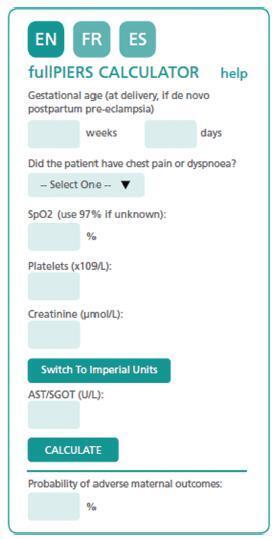
-
Review Article09-25-2020
Primary Dysmenorrhea: Assessment and Treatment
Revista Brasileira de Ginecologia e Obstetrícia. 2020;42(8):501-507
Abstract
Review ArticlePrimary Dysmenorrhea: Assessment and Treatment
Revista Brasileira de Ginecologia e Obstetrícia. 2020;42(8):501-507
Views579See moreAbstract
Primary dysmenorrhea is defined asmenstrual pain in the absence of pelvic disease. It is characterized by overproduction of prostaglandins by the endometrium, causing uterine hypercontractility that results in uterine muscle ischemia, hypoxia, and, subsequently, pain. It is the most common gynecological illness in women in their reproductive years and one of the most frequent causes of pelvic pain; however, it is underdiagnosed, undertreated, and even undervalued by women themselves, who accept it as part of themenstrual cycle. It hasmajor implications for quality of life, such as limitation of daily activities and psychological stress, being one of themain causes of school and work absenteeism. Its diagnosis is essentially clinical, based on the clinical history and normal physical examination. It is important to exclude secondary causes of dysmenorrhea. The treatment may have different approaches (pharmacological, nonpharmacological and surgical), but the first line of treatment is the use of nonsteroidal anti-inflammatory drugs (NSAIDs), and, in cases of women who want contraception, the use of hormonal contraceptives. Alternative treatments, such as topical heat, lifestyle modification, transcutaneous electrical nerve stimulation, dietary supplements, acupuncture, and acupressure, may be an option in cases of conventional treatments’ contraindication. Surgical treatment is only indicated in rare cases of women with severe dysmenorrhea refractory to treatment.


This is an Open Access article distributed under the terms of the Creative Commons Attribution License, which permits unrestricted use, distribution, and reproduction in any medium, provided the original work is properly cited. -
Review Article09-01-2018
Multiple Pregnancy: Epidemiology and Association with Maternal and Perinatal Morbidity
Revista Brasileira de Ginecologia e Obstetrícia. 2018;40(9):554-562
Abstract
Review ArticleMultiple Pregnancy: Epidemiology and Association with Maternal and Perinatal Morbidity
Revista Brasileira de Ginecologia e Obstetrícia. 2018;40(9):554-562
Views454See moreAbstract
Twin pregnancy accounts for 2 to 4% of total births, with a prevalence ranging from 0.9 to 2.4% in Brazil. It is associated with worse maternal and perinatal outcomes. Many conditions, such as severe maternal morbidity (SMM) (potentially life-threatening conditions and maternal near-miss) and neonatal near-miss (NNM) still have not been properly investigated in the literature. The difficulty in determining the conditions associated with twin pregnancy probably lies in its relatively low occurrence and the need for larger population studies. The use of the whole population and of databases from large multicenter studies, therefore, may provide unprecedented results. Since it is a rare condition, it ismore easily evaluated using vital statistics from birth e-registries. Therefore, we have performed a literature review to identify the characteristics of twin pregnancy in Brazil and worldwide. Twin pregnancy has consistently been associated with SMM, maternal near-miss (MNM) and perinatal morbidity, with still worse results for the second twin, possibly due to some characteristics of the delivery, including safety and availability of appropriate obstetric care to women at a high risk of perinatal complications.


This is an Open Access article distributed under the terms of the Creative Commons Attribution License, which permits unrestricted use, distribution, and reproduction in any medium, provided the original work is properly cited. 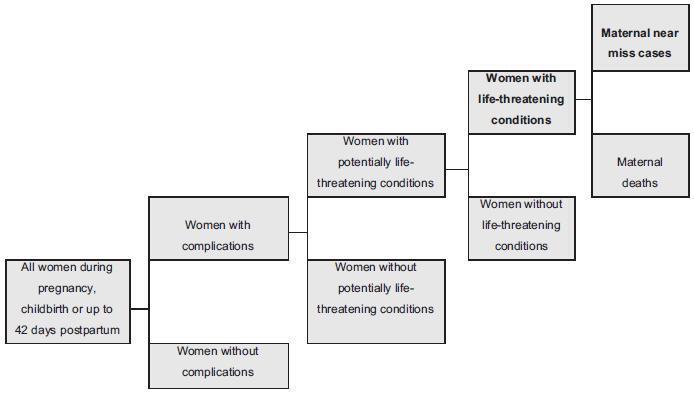
-
Review Article05-01-2018
Uterine Artery Doppler in Screening for Preeclampsia and Fetal Growth Restriction
- Marianna Amaral Pedroso,
- Kirsten Rebecca Palmer,
- Ryan James Hodges,
- Fabricio da Silva Costa,
- Daniel Lorber Rolnik
Abstract
Review ArticleUterine Artery Doppler in Screening for Preeclampsia and Fetal Growth Restriction
Revista Brasileira de Ginecologia e Obstetrícia. 2018;40(5):287-293
- Marianna Amaral Pedroso,
- Kirsten Rebecca Palmer,
- Ryan James Hodges,
- Fabricio da Silva Costa,
- Daniel Lorber Rolnik
Views417See moreAbstract
Objective
To perform a comprehensive review of the current evidence on the role of uterine artery Doppler, isolated or in combination with other markers, in screening for preeclampsia (PE) and fetal growth restriction (FGR) in the general population. The review included recently published large cohort studies and randomized trials.
Methods
A search of the literature was conducted usingMedline, PubMed, MeSH and ScienceDirect. Combinations of the search terms “preeclampsia,” “screening,” “prediction,” “Doppler,” “Doppler velocimetry,” “fetal growth restriction,” “small for gestational age” and “uterine artery” were used. Articles in English (excluding reviews) reporting the use of uterine artery Doppler in screening for PE and FGR were included.
Results
Thirty articles were included. As a single predictor, uterine artery Doppler detects less than 50% of the cases of PE and no more than 40% of the pregnancies affected by FGR. Logistic regression-based models that allow calculation of individual risk based on the combination of multiple markers, in turn, is able to detect ~ 75% of the cases of preterm PE and 55% of the pregnancies resulting in small for gestational age infants.
Conclusion
The use of uterine artery Doppler as a single predictive test for PE and FGR has poor accuracy. However, its combined use in predictive models is promising, being more accurate in detecting preterm PE than FGR.


This is an Open Access article distributed under the terms of the Creative Commons Attribution License, which permits unrestricted use, distribution, and reproduction in any medium, provided the original work is properly cited. -
Review Article02-01-2016
Conservative Treatment of Stress Urinary Incontinence: A Systematic Review with Meta-analysis of Randomized Controlled Trials
- Rafael Mendes Moroni,
- Pedro Sergio Magnani,
- Jorge Milhem Haddad,
- Rodrigo de Aquino Castro,
- Luiz Gustavo Oliveira Brito
Abstract
Review ArticleConservative Treatment of Stress Urinary Incontinence: A Systematic Review with Meta-analysis of Randomized Controlled Trials
Revista Brasileira de Ginecologia e Obstetrícia. 2016;38(2):97-111
- Rafael Mendes Moroni,
- Pedro Sergio Magnani,
- Jorge Milhem Haddad,
- Rodrigo de Aquino Castro,
- Luiz Gustavo Oliveira Brito
Views395See moreWe performed a systematic review and meta-analysis of randomized controlled trials that studied the conservative management of stress urinary incontinence (SUI). There were 1058 results after the initial searches, from which 37 studies were eligible according to previously determined inclusion criteria. For the primary outcomes, pelvic floor muscle training (PFMT) was more efficacious than no treatment in improving incontinence-specific quality of life (QoL) scales (SMD = [1]1.24SDs; CI 95% = [1]1.77 to [1]0.71SDs). However, its effect on pad tests was imprecise. Combining biofeedback with PFMT had an uncertain effect on QoL (MD = [1]4.4 points; CI 95% = [1]16.69 to 7.89 points), but better results on the pad test, although with elevated heterogeneity (MD = 0.9g; 95%CI = 0.71 to 1,10g); group PFMT was not less efficacious than individual treatment, and home PFMT was not consistently worse than supervised PFMT. Both intravaginal and superficial electrical stimulation (IES and SES) were better than no treatment for QoL and pad test. Vaginal cones had mixed results. The association of IES with PFMT may improve the efficacy of the latter for QoL and pad test, but the results of individual studies were not consistent. Thus, there is evidence of the use of PFMT on the treatment of SUI, with and without biofeedback.


This is an Open Access article distributed under the terms of the Creative Commons Attribution License, which permits unrestricted use, distribution, and reproduction in any medium, provided the original work is properly cited. 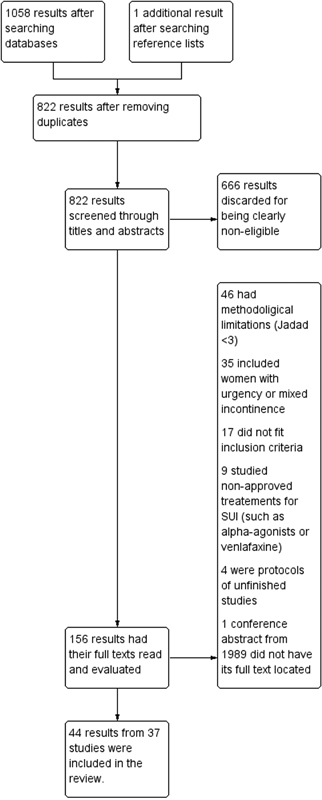
-
Review Article09-16-2019
Do Women have Adequate Knowledge about Pelvic Floor Dysfunctions? A Systematic Review
- Júlia Ferreira Fante,
- Thais Daniel Silva,
- Elaine Cristine Lemes Mateus-Vasconcelos,
- Cristine Homsi Jorge Ferreira,
- Luiz Gustavo Oliveira Brito

Abstract
Review ArticleDo Women have Adequate Knowledge about Pelvic Floor Dysfunctions? A Systematic Review
Revista Brasileira de Ginecologia e Obstetrícia. 2019;41(8):508-519
- Júlia Ferreira Fante,
- Thais Daniel Silva,
- Elaine Cristine Lemes Mateus-Vasconcelos,
- Cristine Homsi Jorge Ferreira,
- Luiz Gustavo Oliveira Brito

Views385See moreAbstract
Objective
We sought to investigate whether women present adequate knowledge of the main pelvic floor disorders (PFDs) (urinary incontinence – UI, fecal incontinence – FI, and pelvic organ prolapse – POP).
Data
sources A systematic review was performed in the MEDLINE, PEDro, CENTRAL, and Cochrane databases for publications from inception to April 2018. Selection of studies A total of 3,125 studies were reviewed. Meta-analysis was not possible due to the heterogeneity of primary outcomes and the diversity of instruments for measuring knowledge. The quality of the articles included in the analysis was evaluated with the Newcastle-Ottawa Scale (NOS) adapted for cross-sectional studies.
Data collection
Two authors performed data extraction into a standardized spreadsheet.
Data synthesis
Nineteen studies were included, comprising 11,512 women. About the methodological quality (NOS), most of the studies (n= 11) presented a total score of 6 out of 10. Validated questionnaires and designed pilot-tested forms were the most frequently used ways of assessing knowledge. Some studies were stratified by race, age, or group minorities. The most used questionnaire was the prolapse and incontinence knowledge questionnaire (PIKQ) (n= 5). Knowledge and/or awareness regarding PFD was low to moderate among the studies. Urinary incontinence was the most prevalent PFD investigated, and the most important risk factors associated with the lack of knowledge of the pelvic floor were: African-American ethnicity (n= 3), low educational level (n= 4), low access to information (n= 5) and socioeconomic status (n= 3).
Conclusion
Most women have a gap in the knowledge of pelvic floor muscle dysfunctions, do not understand their treatment options, and are not able to identify risk factors for these disorders.


This is an Open Access article distributed under the terms of the Creative Commons Attribution License, which permits unrestricted use, distribution, and reproduction in any medium, provided the original work is properly cited. -
Review Article08-26-2020
Covid-19 and Pregnancy: An Overview
- Pedro Castro
 ,
, - Ana Paula Matos
 ,
, - Heron Werner
 ,
, - Flávia Paiva Lopes
 ,
, - Gabriele Tonni
 , [ … ],
, [ … ], - Edward Araujo Júnior

Abstract
Review ArticleCovid-19 and Pregnancy: An Overview
Revista Brasileira de Ginecologia e Obstetrícia. 2020;42(7):420-426
- Pedro Castro
 ,
, - Ana Paula Matos
 ,
, - Heron Werner
 ,
, - Flávia Paiva Lopes
 ,
, - Gabriele Tonni
 ,
, - Edward Araujo Júnior

Views277See moreAbstract
Since the World Health Organization (WHO) declared coronavirus infection (COVID-19) a Public Health Emergency of International Concern in January 2020, there have been many concerns about pregnant women and the possible effects of this emergency with catastrophic outcomes inmany countries. Information on COVID-19 and pregnancy are scarce and spread throughout a fewcase series, with no more than 50 cases in total. The present review provides a brief analysis of COVID-19, pregnancy in the COVID-19 era, and the effects of COVID-19 on pregnancy.


This is an Open Access article distributed under the terms of the Creative Commons Attribution License, which permits unrestricted use, distribution, and reproduction in any medium, provided the original work is properly cited. - Pedro Castro
Search
Search in:
Tag Cloud
Pregnancy (252)Breast neoplasms (104)Pregnancy complications (104)Risk factors (103)Menopause (88)Ultrasonography (83)Cesarean section (78)Prenatal care (71)Endometriosis (70)Obesity (61)Infertility (57)Quality of life (55)prenatal diagnosis (51)Women's health (48)Maternal mortality (46)Postpartum period (46)Pregnant women (45)Breast (44)Prevalence (43)Uterine cervical neoplasms (43)

